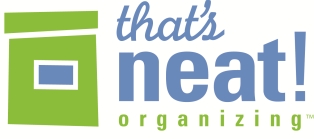Organize your Attic
/Today was the day! The semi-annual organizing of the attic. Every fall and spring I do a big organizing of the attic. We have an easy walk up attic, but often lots of things get stuck on the landing or right inside the attic door, not really put away. Today my husband helped me tackle the space.
What we did:
Put things away. A bunch of bins had been moved due to a roof leak, and now we could put them back. Other things were out of their regular spots. Not putting things away is a huge reason for clutter, so we tackled this first.
Recycle old boxes. We discovered lots and lots of boxes for electronics we are using and since we’re not moving, it’s time to get recycle the boxes.
Organize and get rid of donations. I knew we had stuff to donate in the attic, so I pulled it all out and separated the stuff by where it would get donated (books, household goods, and things to put on my local Everything Is Free list). Once you’ve decided to donate something, get it out of your house as soon as possible.
Plan projects. We had acquired some new “project” furniture, items that we are planning to update or redo. These took a prominent spot not to far away so that I can work on the projects this winter.
This took about three hours, but we felt very accomplished once it was done. Happy that our unwanted items go on to be used by someone else.






















